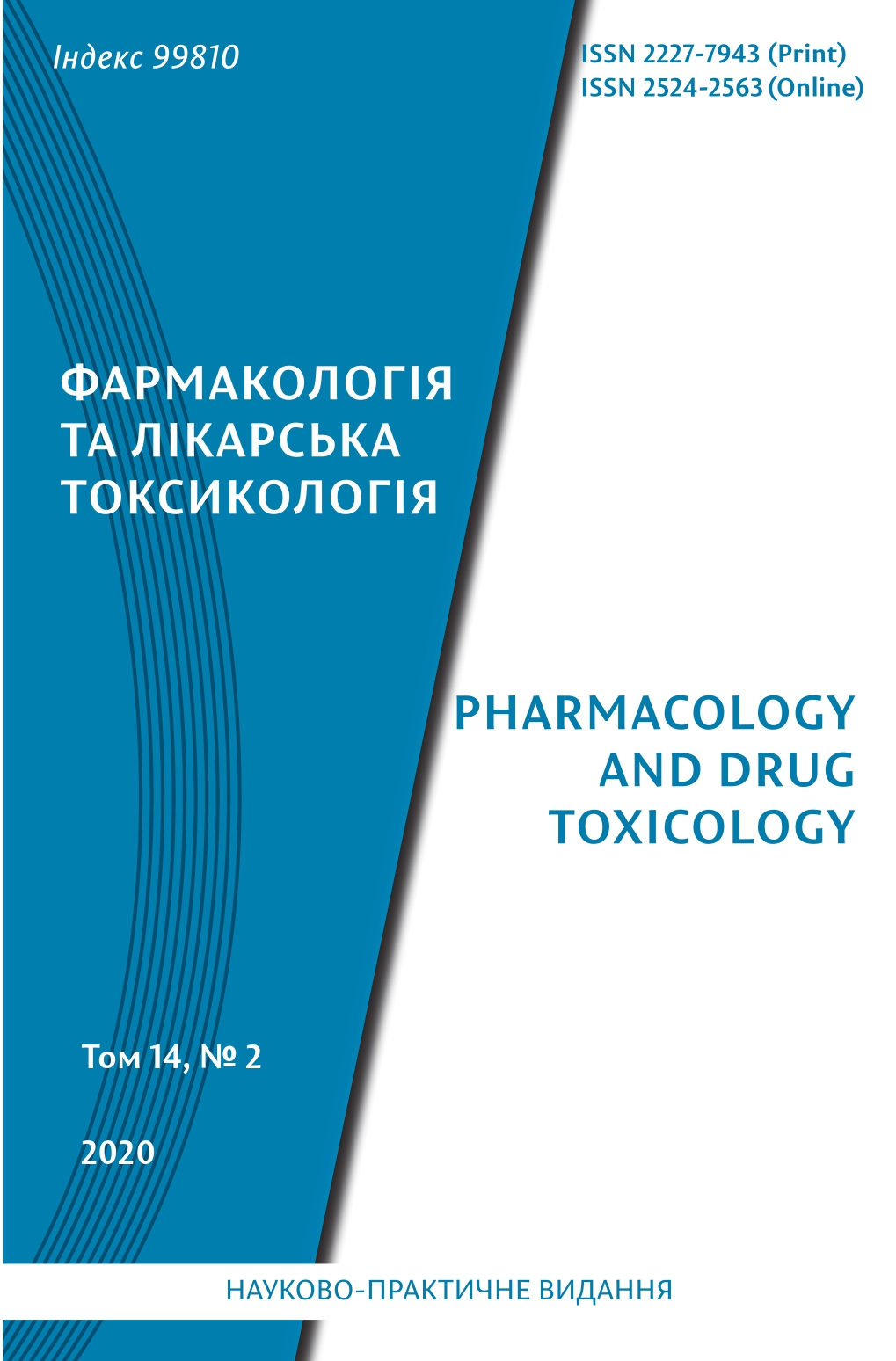Abstract
Numerous pathological conditions are accompanied by pain, which requires pharmacological correction. In order to enhance the effectiveness of, in particular, non-steroidal anti-inflammatory drugs as analgesic and anti-inflammatory drugs, adjuvant therapy is often used. Taking into account possible psycho-emotional disorders and membrane integrity disorders that can be observed with pain, it is necessary to investigate whether it is advisable to use tranquilizers and/or antidepressants with analgesics to reduce the symptom of inflammation and to improve the structural and dynamic properties of cell membranes. The purpose of the study – to investigate the analgesic, anti-inflammatory and membrane-stabilizing effect of the daily tranquilizer Gidazepam and the classic tricyclic antidepressant Amitriptyline when combined with the non-narcotic analgesic Ketorolac at pain syndrom. The results of the study indicate a pharmacodynamic interaction between non-steroidal antiinflammatory drugs and tranquilizers and antidepressants at acute pain. Gidazepam and Amitriptyline are characterized by analgesic activity in the pain syndrome induced by the introduction of formalin. Gidazepam and Amitriptyline do not affect the analgesic activity of Ketorolac and their own analgesic activity does not change when combined with Ketorolac compared with monotherapy by tranquilizer and antidepressant. Ketorolac has an antiedemic (anti-inflammatory) effect in the pain syndrome induced by a chemical agent. Gidazepam helps to reduce, and Amitriptyline – enhances edema, both in monotherapy and combined use with Ketorolac. Gidazepam and Ketorolac, when used singly and when combined, exhibit a membrane-stabilizing effect, as evidenced by a decrease in the binding constant of the ANS probe- in erythrocyte membrane to the norm and a protective effect on the structure of deep hydrophobic links of erythrocyte membranes. Amitriptyline does not have a positive effect on the structural-dynamic characteristics of membranes in this model of inflammation. The knowledge gained can be taken into account when developing new and optimizing existing regimens for the use of analgesics and adjuvant drugs under pain syndrome of chemical genesis.
